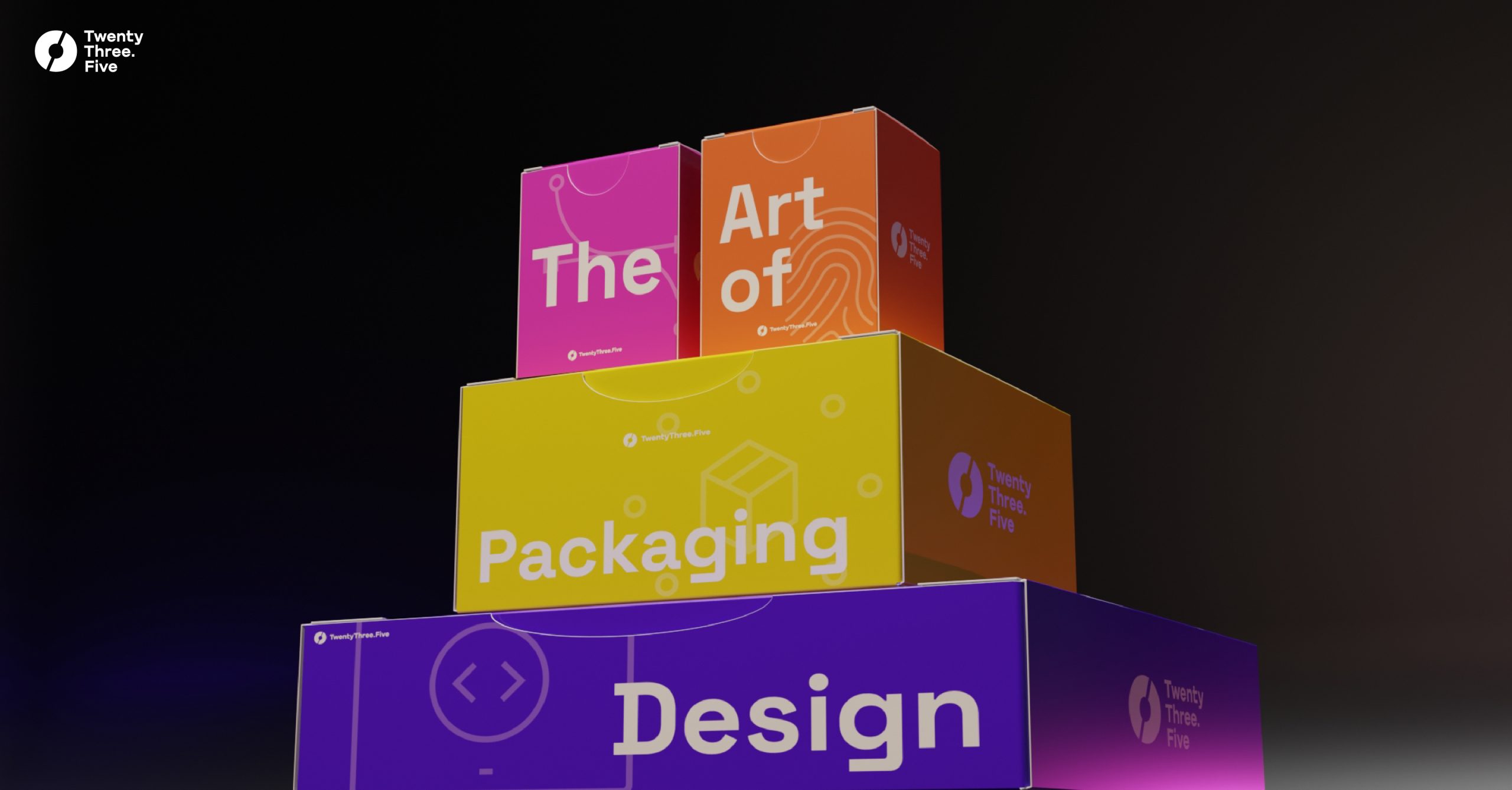
In today’s highly competitive marketplace, the visual impact of a product’s packaging is often the first point of contact between a brand and a potential consumer. Packaging design isn’t just about wrapping a product; it’s an art form that can significantly influence consumer behavior and brand perception. Today, we’ll delve into the world of packaging design, exploring its impact, essential elements, storytelling power, sustainability, and trends.
The Impact of Packaging Design
When you walk down the aisles of a supermarket or browse an online store, what catches your eye first? In most cases, it’s the packaging. The impact of packaging design on consumer behavior cannot be overstated. It’s often the deciding factor in whether a consumer chooses one product over another.
Studies have shown that consumers make split-second judgments about a product based on its packaging. The design, colors, and overall aesthetics play a vital role in these judgments. This is why packaging design is considered the silent salesman on the shelf, silently communicating with shoppers and influencing their purchasing decisions.
The First Impression
Packaging is often the first impression a consumer has of your brand and product. It sets the tone for their entire experience. A well-designed package can convey a sense of quality, trustworthiness, and professionalism. On the other hand, a poorly executed package may deter potential buyers.
A Competitive Edge
In today’s crowded marketplaces, standing out is essential. Effective packaging design can give your brand a competitive edge. It’s your opportunity to differentiate your product from the competition, communicate your brand’s unique value, and create a memorable presence in the minds of consumers.
Emotional Connection
Packaging design has the power to create emotional connections with consumers. A package that resonates with a person’s values, aspirations, or memories can establish a deep bond. This emotional connection can lead to brand loyalty, repeat purchases, and advocacy.
Elements of Effective Packaging Design
What makes a packaging design effective? It’s a combination of several essential elements, each playing a crucial role in capturing the consumer’s attention and conveying your brand’s message.
Color
Color is one of the most powerful elements in packaging design. Different colors evoke different emotions and associations. For example, blue can convey trust and reliability, while red may represent energy and excitement. The strategic use of color can influence how consumers perceive your product and brand.
Typography
The choice of fonts and typography in packaging design matters. Fonts can communicate a brand’s personality, whether it’s traditional, modern, playful, or sophisticated. Legible typography ensures that important information is easily accessible to consumers.
Imagery
Images and graphics on packaging can tell a story, showcase product features, or create a mood. High-quality imagery can captivate consumers and convey the product’s benefits or usage. Imagery also plays a significant role in differentiating your brand from competitors.
Shape and Structure
The physical shape and structure of a package can be a powerful design element. Unique packaging shapes can make your product memorable and easier to recognize. Consider iconic packaging like the Coca-Cola bottle, which is instantly recognizable due to its distinct contour.
Simplicity and Clarity
In an era of information overload, simplicity and clarity in packaging design are valued. Consumers appreciate packaging that communicates essential information clearly and concisely. Avoid clutter and unnecessary details that can overwhelm the consumer.
Authenticity
Authenticity in packaging design is becoming increasingly important. Consumers are drawn to brands that are genuine and transparent. Packaging should accurately represent the product inside and align with the brand’s values.
Uniqueness
A distinctive and unique design sets your product apart from competitors. It makes your packaging instantly recognizable, creating a sense of brand identity. Uniqueness can be achieved through creative design, materials, or a combination of both.
Storytelling through Packaging
Packaging design is not just about aesthetics; it’s a powerful storytelling tool. It allows brands to communicate their values, mission, and identity. When done effectively, packaging can create a narrative that resonates with consumers.
Conveying Brand Values
Packaging design can reflect a brand’s values and principles. For example, brands committed to sustainability often use eco-friendly packaging materials to convey their dedication to the environment. This alignment between values and packaging design creates a sense of authenticity.
Evoking Emotions
Storytelling through packaging can evoke emotions and connect with consumers on a personal level. For example, a package featuring images of families enjoying a product can tap into the emotions of warmth and togetherness.
Building Brand Loyalty
Effective storytelling through packaging can build brand loyalty. When consumers feel a personal connection with a brand’s story, they are more likely to choose that brand repeatedly. This loyalty translates into long-term customer relationships.
Trends in Packaging Design
Packaging design is a dynamic field that evolves with consumer preferences and industry innovations. Staying up-to-date with packaging trends can help brands remain relevant and appealing to consumers.
Minimalism
Minimalist packaging design emphasizes simplicity, clean lines, and uncluttered aesthetics. It often features a limited color palette and focuses on essential information. Minimalism conveys a sense of sophistication and modernity.
Vintage Aesthetics
Vintage-inspired packaging design evokes nostalgia and a sense of timelessness. Brands often use retro graphics, typography, and color schemes to create a vintage feel. This approach can resonate with consumers seeking authenticity and a connection to the past.
Personalization
Personalized packaging design tailors the packaging to the individual consumer. It may include the consumer’s name, customized graphics, or product recommendations based on past purchases. Personalization enhances the consumer’s sense of uniqueness.
Sustainability
Sustainable packaging is not just a trend but a significant shift in the industry. Brands are incorporating eco-friendly materials and design practices to reduce their environmental footprint. Sustainable packaging design is likely to continue growing in importance.
Innovative Materials
Innovative materials are pushing the boundaries of packaging design. Brands are exploring unconventional materials, such as edible packaging, to create memorable and eco-friendly packaging solutions.
Case Studies of Successful Packaging Designs
Let’s take a closer look at real-world examples of brands that have excelled in packaging design.
Apple
Apple’s packaging is synonymous with sleek, minimalist design. The company’s product boxes feature a clean white exterior with a simple image of the product. The unboxing experience is carefully curated, with the product nestled inside, creating anticipation and excitement.
Coca-Cola
Coca-Cola’s iconic contour bottle is a prime example of distinctive packaging design. The shape of the bottle, along with the classic red label, has remained virtually unchanged for decades. It’s instantly recognizable and conveys a sense of tradition and nostalgia.
Tiffany & Co.
Tiffany & Co.’s packaging is as iconic as its jewelry. The brand’s signature blue box has become a symbol of luxury and sophistication. It sets high expectations for the jewelry inside and creates a sense of excitement and anticipation.
Starbucks
Starbucks’ coffee cups and packaging are known for their unique and ever-changing designs. The brand often releases limited-edition packaging to coincide with seasons or special occasions. This strategy keeps the brand fresh and engaging for consumers.
Amazon
Amazon’s packaging design focuses on functionality and sustainability. The company’s frustration-free packaging initiative aims to reduce waste and improve the unboxing experience. It’s a practical approach that aligns with consumer expectations.
The Future of Packaging Design
As consumer preferences, technology, and sustainability considerations continue to evolve, the future of packaging design holds exciting possibilities.
Packaging design is a multidimensional art form that goes beyond aesthetics. It’s a powerful tool for capturing consumer attention, conveying brand identity, and evoking emotions. Effective packaging design influences purchasing decisions, builds brand loyalty, and creates lasting impressions.
As the consumer landscape evolves, brands must adapt their packaging strategies to remain competitive. Embracing sustainability, staying on-trend with design elements, and leveraging technology are essential steps toward creating packaging that resonates with today’s consumers.
The art of packaging design continues to evolve, offering exciting possibilities for brands willing to embrace innovation and creativity. As you consider your packaging design strategy, remember that your package is more than just a container; it’s an opportunity to engage, inspire, and leave a lasting mark on consumers.
If you’re ready to embark on the journey of elevating your brand through packaging design, we are here to help. Let’s start a mission today to explore the possibilities and unlock the potential of captivating packaging design.


